Need a little help buying a new fishing reel, buying your first reel, figuring out whether you need a new fixed spool reel, free spool reel, front drag reel or rear drag reel? Well you’ve come to the right place as here’s a detailed article providing masses of help to ensure you purchase the correct reel.
Read on and you’ll be able to decide what style of reel to choose, what size, what number of ball bearings and what configuration of fishing reel you will need to help you cast effectively and catch a whole lot more fish.
We’ve split this article into sections to help you through the many different features of fishing reels, what they do, how they can help the angler and much more besides…
Related: Best Fishing Reels
Style of reels available
The coarse angler has six different styles of reel available to use, all detailed below. Some are extremely flexible and can be used for a huge array of different fishing styles, while others are really quite specialised and are best used in certain circumstances, and even only with certain baits.
Fixed spool reels

By far the most common fishing reel available – almost every single angler in the country has at least one fixed spool reel.
The reason why they are called fixed spool reels is simple – the spool of the reel, under normal fishing circumstances, doesn’t move. It is set in a fixed position and instead the rotor arm passes around the spool to wind the line back onto the spool. Years before fixed spool reels were invented anglers used centrepin reels that did have revolving drums.
Fixed spool reels come in a wide variety of sizes, colours and configurations. Some have front drag systems, some have rear drag systems. Some have single handles, some have double handles. You’ll find much more information concerning these features below.
This type of fishing reel makes for a great all round reel. It could be used for float fishing, legering, lure fishing, trotting, specimen fishing, pleasure fishing or match fishing – it really is the most versatile reel we have at our disposal.
What makes fixed spool reels so versatile is that they are cheap, they are easy to use, they often come supplied with extra interchangeable spools to hold different strengths of fishing line, and they are reliable. Some of the best reels on the market will last decades of service, without a need for a service too!
Their mechanisms can be locked at a flick of a switch to ensure that the reel cannot turn backwards and this is brilliant when legering as it allows the angler to fine-tune a quivertip to help spot every single bite.
They can be used for close range fishing right through to 100-yard casts with a heavyweight feeder – they really are incredibly versatile.
You could pick up a new, budget fixed spool reel for as little as £5, and for only £30 you will be able to find a reliable reel that will last a good few seasons. Fixed spool reels that will last a lifetime cost upwards of £100.
Free spool reels
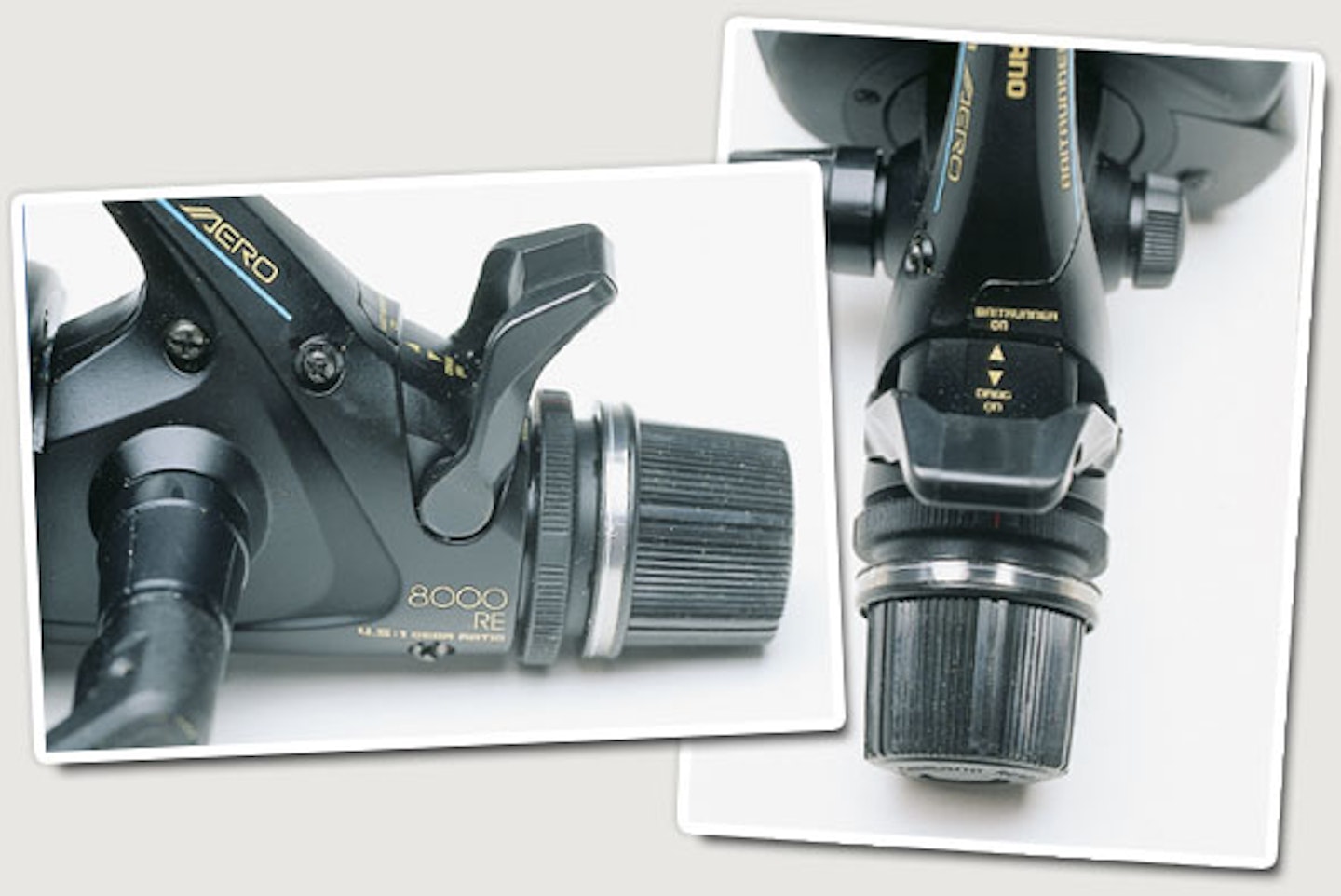
Free spool fishing reels are an advanced design of fixed spool reels. They are exactly the same as fixed spool reels but they have one additional feature – an extra drag system.
This system, when it’s switched on, will allow the reel’s spool to turn under a set amount of tension determined by the angler. So, if a fish were to pick up a baited rig and swim off with it, line can strip from the reel easily. All the angler has to do to stop the line coming off the reel is to pick up the rod and turn the reel’s handle to disengage the free spool mechanism.
This feature is widely used by specimen carp, barbel, pike and catfish anglers as those species are widely known to pick up baits and swim off with them.
If a normal reel is used for this purpose there’s a very high chance that the fish would simply drag the rod and reel into the water because the spool can’t revolve to pay out line – it’s happened many times before.
Generally speaking free spool reels tend to be larger and heavier than fixed spool reels because there’s more mechanics within the reel’s body, and they tend to be used for casting heavier rigs longer distances, so the spools are often on the large side.
There are some free spool reels on the market costing as little as £15, but pay upwards of £40 and you will have a reel that’s reliable, performs well, casts well and won’t let you down when a big fish is cranked back to the net.
Big pit reels
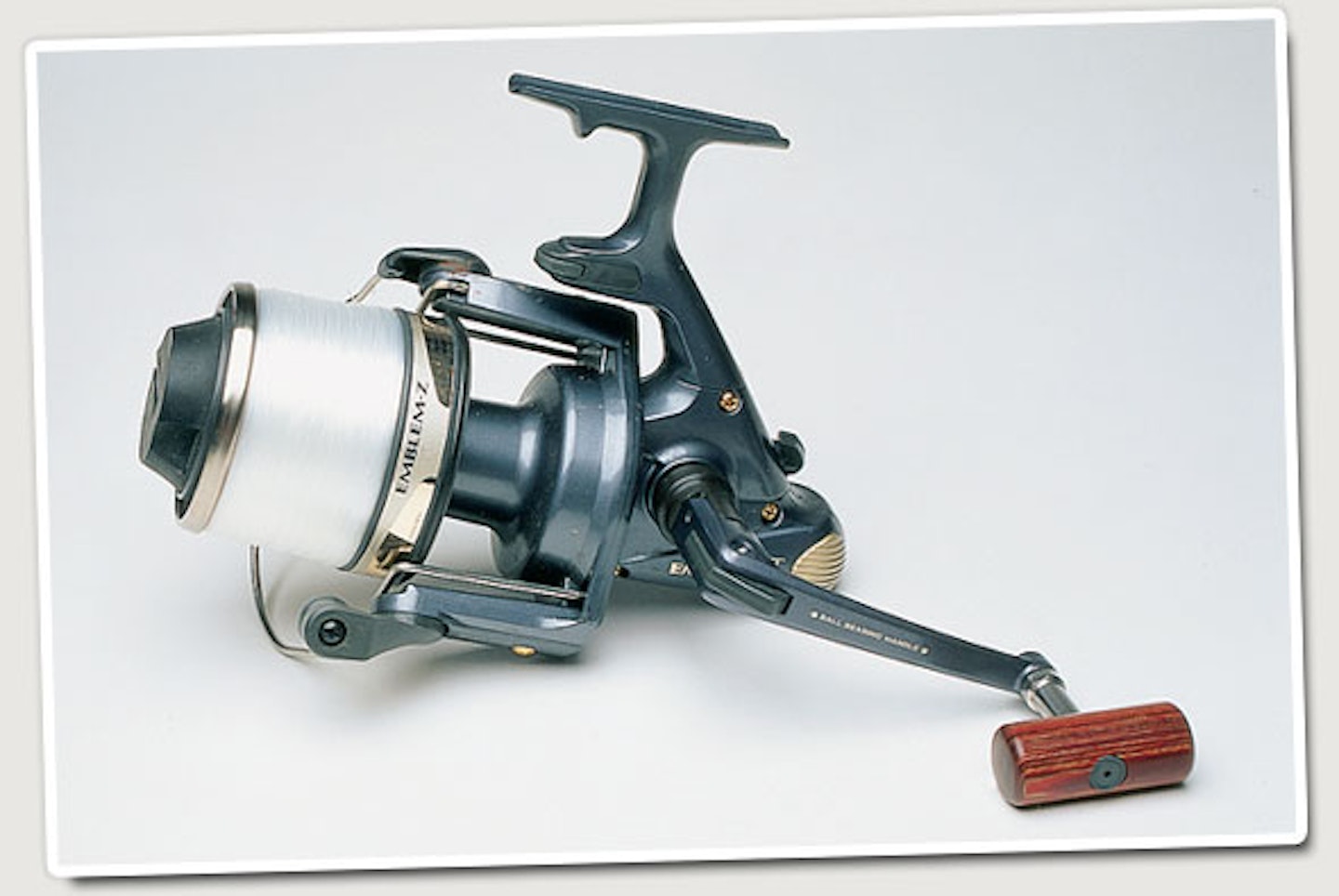
Big fish anglers often need to cast extreme distances with either their baited rigs or with marker rod or spod set-ups. These are the times when a big pit reel come into play.
These specialist fixed spool reels are huge. They have small bodies, large handles, great cranking power, but above all they have enormous spools capable of holding many 100s of yards of thick line.
They offer the same features as most fixed spool reels (anti-reverse, line clips, folding handles etc) but their massive spools allow the angler to cast far further than he has ever done before.
Line on these large spools can strip off easily and with very little resistance, ensuring that the baited rig, marker float or spod flies as far as possible.
Carp, catfish and pike anglers tend to use big pit reels when they are fishing, feeding or finding a swim at range.
Some big pit reels come with a free spool facility that can be used to let the fish swim off with a baited rig and this feature gives the specialist big-fish angler even more reason to want to own one or a set.
Cheaper big pit reels will cost around £40, but expect to pay in the region of £80-plus for a reliable model that will last for many seasons and through the fights of many big fish.
Centrepin reels

Although somewhat outdated, centrepin reels take some beating when fishing flowing water. A well looked-after centrepin that rotates well will give the angler years of superb river float fishing because the rotating drum will pay out line at exactly the speed of the current. And this ensures that the baited rig travels downstream naturally and enticingly.
A good centrepin reel will not only spin for long periods, it ought to stop and revolve in the opposite direction with the gentlest of taps on the drum or the handles. This ability will prove very useful when hooking into a fish as the reel will have to stop quickly and begin revolving in the opposite direction for retrieval of the fish or the rig.
There are two main types of centrepin – wide drum and narrow drum. If you intend to fish with fine lines for small fish using light float rigs then a narrow drum centrepin is best. But if you’re intent on using strong lines for heavy float work, stret pegging or rolling baits for barbel then opt for a wide drum model.
Some centrepins are supplied with ratchets. This is basically a spring-loaded switch that can be engaged to tighten the reel’s drum to hinder it from spinning – but it doesn’t lock it tight. The ratchet is useful when legering to create a tight line to the lead, and also to provide audible bite detection due to the ratchet clicking as the drum starts to revolve when a fish takes line.
Another feature that might be found on centrepin reels is a drag system. This simply allows the angler to tighten the drum a little, slowing the revolving drum. This again comes in useful when legering or when trotting a river and you need to slow the speed of the drum down to hinder the progress of your rig. Drags can be fine-tuned easily to provide the perfect speed of rotation.
Although very simple in their design, centrepin reels aren’t cheap. A good one from a reputable manufacturer will cost in the region of £150 to £250. But you’ll have a sound reel that will - if treated well - last a lifetime and beyond without depreciating massively.
Closed face reels
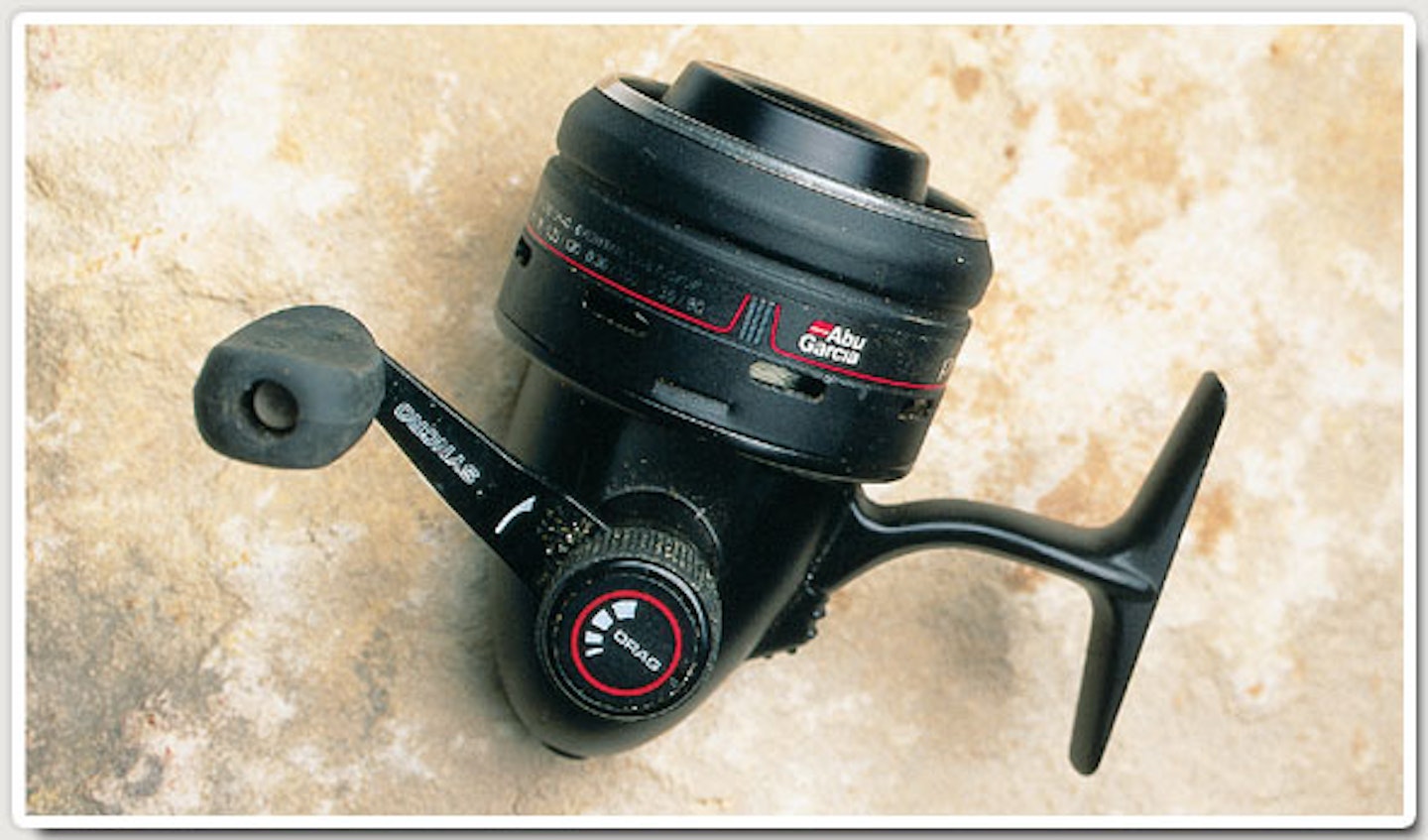
Closed face reels, like centrepin reels, are quite specialist tools. There have only ever been a handful of closed face reels in production from the likes of Ryobi (now obsolete), Daiwa and ABU Garcia.
They found favour with the river angler because not only are they extremely light and therefore easy on the arms, with a dab of an outstretched forefinger the bale pin or pins would release and line would peel from the enclosed spool very smoothly.
This enabled river anglers to cast their stick floats, trot the rig downstream and trap line for the strike without a hint of a problem.
They were the next best thing to centrepin reels – even better in some cases because closed face reels are much easier to cast than centrepin reels, giving even the novice angler the chance to catch river fish on the float.
They aren’t the most powerful reel though. And they aren’t the most technically advanced either. In most instances, after a couple of seasons use the average closed face reel sounded more like a coffee grinder than a reel when it was wound.
But there are still many closed face reels in use on rivers and stillwaters, undoubtedly due to their ease of use, ease of casting, their low weight and the fact that the enclosed spool prevents wind from creating problems with the line.
In the last few weeks of 2009 ABU Garcia released an upgraded version of their very popular Premier closed face reel – the new Premier 706. This is a sound investment for the float angler and retails at around £75.
Multiplier reels

More frequently used by sea anglers fishing from boat or beach, multipliers are also used by some coarse fisherman when lure fishing.
Because of the small and compact nature of multiplier reels and the fact that they can be operated by the thumb, multiplier reels lend themselves perfectly to lure fishing. An avid lure angler can cast artificial baits many yards single-handedly really easily.
The only problem facing lure anglers who choose to use multiplier reels is the rod. As multipliers are positioned on top of the rod, it’s necessary to buy a rod designed to be used with a multiplier. The reel seat has to be slightly different, the blank action has to be different and the way the line guides are positioned has to be different to the norm as well.
Multipliers are very easy to use, but only when they have been set up correctly. The brake has to be adjusted to prevent the drum spinning after the lure has entered the water. If it’s not tightened correctly the drum will carry on rotating, causing line to strip from the drum and tangle. After a few of these near impossible to save tangles you’ll wish you had set the drag correctly!
ABU Garcia and Masterline multiplier reels are firm favourites among lure anglers.
Drag systems
All modern fixed spool reels have drag systems. Some of them are adjustable at the back of the reel (rear drag) while some are adjustable upon the spool (front drag reels).
Rear drag models are the most popular among pleasure anglers, while front drag reels are the favourite among lure anglers and increasingly popular among match anglers.
Both style of drags provide the same function – they tighten or slacken the movement of the spool. When the drag is set at its loosest setting, the spool will rotate easily and a fish will be able to pull line from the reel faster than you’ll be able to wind it in.
At its tightest setting the spool will lock tight and the line will snap before the spool gives and starts to pay out any line.
Once a rig has been made the drag should be adjusted to suit. To do this guess the drag required, hold the rod and reel in one hand, and hold your line and in the other. Flex the rod as far as you can to see if the line begins stripping from the spool.
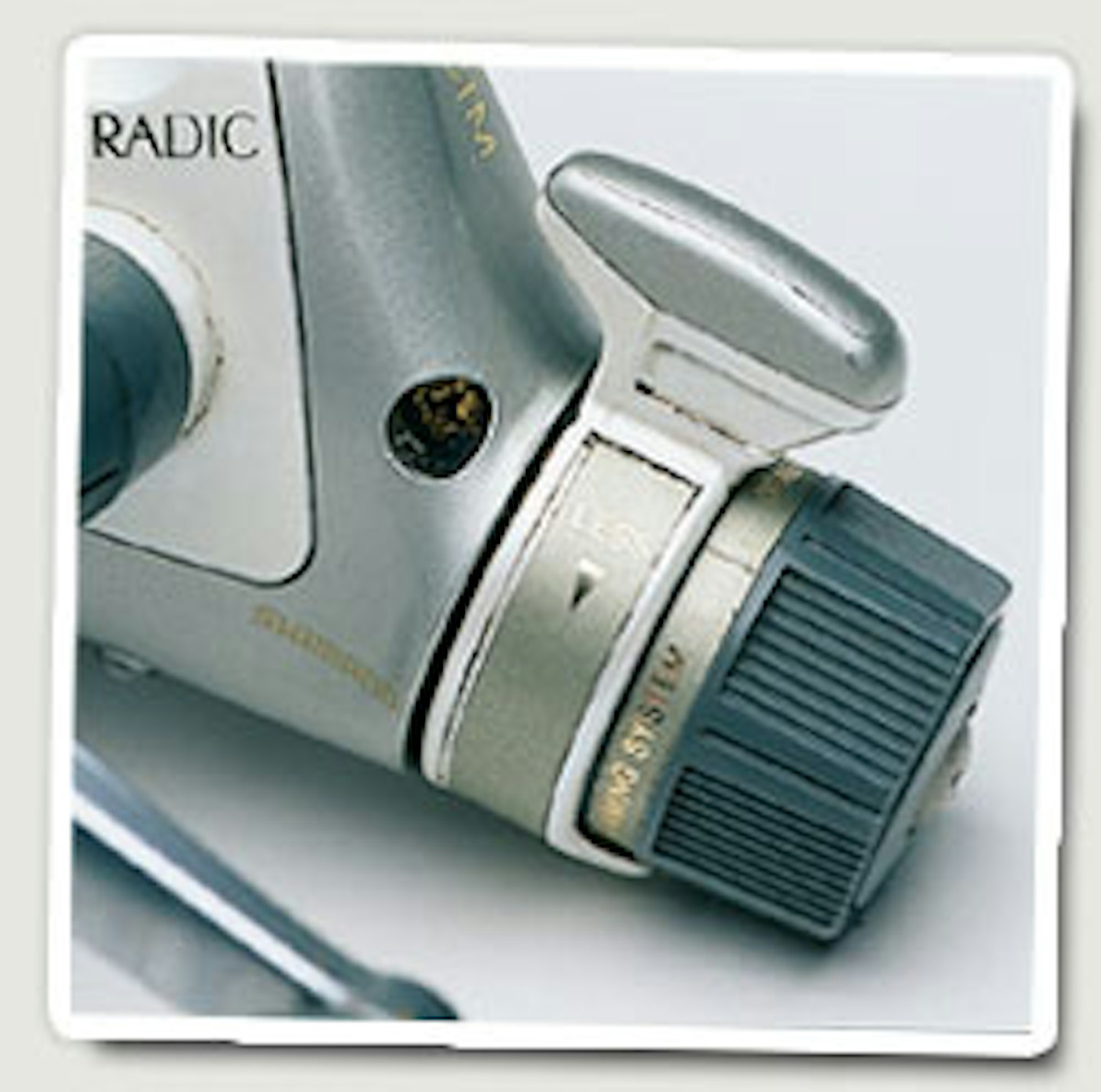
You should adjust the drag so that the spool begins paying out line just before the line gives up and snaps.
Regarding the performance of the different types of drag systems – front drag reels have the edge over rear drag reels simply because the mechanics of the drag don’t have to run all the way through the reel’s body – they are positioned right on the end of the spool. This means that front drag reels are slightly more effective than rear drag models. Maybe this is why so many of our top-flight match anglers prefer front drag reels.
Most reel manufacturers code their front drag reels as FD, and their rear drag reels as RD.
Some of the more advanced and expensive fixed spool reels have a fighting drag system. This is yet another drag switch set at the rear of the reel’s body and by either pushing it to the left or right will either tighten the drag or loosen it. This feature will ensure that you have direct control over a hooked fish at all times throughout the fight, ensuring that the fish can take line when necessary, and you can also tighten up and stop the fish if it heads towards any snags.
Bearings
The amount of bearings set inside a reel will determine how smooth-running it is. But bearings help prolong the reel’s lifespan too, taking the brunt of any wear and tear of the moving parts.
Basic, budget fixed spool reels tend to have one, two or three bearings, while top of the range fixed spool reels may have as many as 12.
Pick up two reels – one having a few ball bearings and one having many and give them a spin. You’ll soon feel the difference, and what a difference it makes!
Spools

Multipliers, centrepins and big pit reels tend to only be supplied with the one spool, but closed face reels, fixed spool reels and free spool reels may well have a spare spool, or more in the case of higher quality reels.
This isn’t a sales gimmick – it’s a useful addition that allows anglers to load up each spool with different strengths of line, or braid depending upon what you prefer using.
If stored safely in a watertight bag that doesn’t allow light to penetrate, the line upon the spare spools will last for a year or more, depending upon how much it’s used.
If you do invest in a reel with additional spools the best and simplest way to remember the strength of line on each is to paint a little Tipp-Ex on the inside of the spool, let it dry, then use a fine permanent pen to write down the line strength over the Tipp-Ex blob. Simple!
The spools of rear drag reels can be released by pressing the centre button at the very front of the spool. To release front drag spool you will have to fully unscrew the front disk, but be careful not to knock off any washers from the spindle.
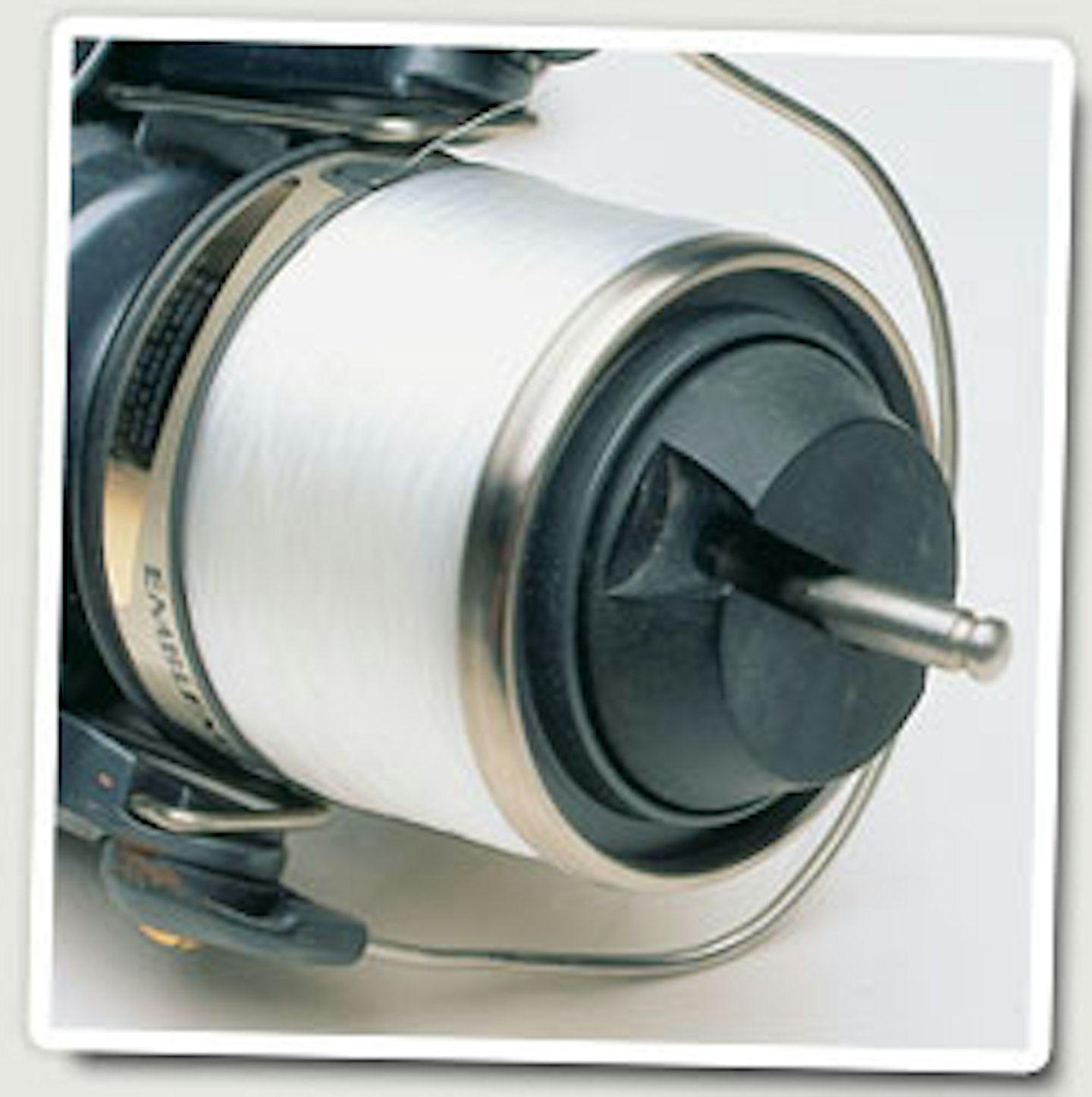
Free spool conversions
If you have a large reel, but wish it was a free spool reel, there are companies that specialise in converting the spool assembly to transform the reel into a free spool model.
For much less than the price of a new free spool reel you could transform your favourite large fixed spool reel into a model that will let line strip from the spool if a big fish decides to take the baited rig.
Line lay
The flatter the lay of line upon a reel’s spool the better the reel will perform when casting. You’ll cast further with less effort, and you’ll be able to cast with much more accuracy too.
A flat line lay will ensure that the line peels off the spool consistently and with less resistance than a spool that has a curved line lay.
Unfortunately this is impossible to know when you’re buying a reel off the shelves. To find out a reel’s line lay check out reviews of new models within the angling press or on this website as we have the chance to load the reels fully and try them out.
Line clips
If you’re not that bothered about accuracy when you’re casting then you don’t need to worry about whether the spool on your reel has a line clip or not. But you should be bothered as accuracy is everything when fishing.
If you keep casting feeders to the same spot every time you will catch more fish, and a line clip on your spool will help you achieve this.
All you need to do is cast out your rig to the chosen distance and then wrap the line around the clip. Retrieve the rig, aim it towards the same spot and chances are the line will shoot off the spool until it hits the line clip, making the rig stop. That will provide you with the accuracy you need to ensure you hit the same spot upon every single cast.
Retrieve ratio
The retrieve ratio of a reel gives an indication of the reel’s speed. The average fixed spool reel will have a retrieve ratio of around 5.2:1. This means that the rotor assembly will spin around the spool 5.2 times for every one full turn of the handle. That’s about the average speed of a general purpose fixed spool reel.
Really powerful specialist reels such as some big pit reels have much slower retrieve ratios -along the lines of 4:1. This gives the reel more cranking power, allowing the angler to take control of larger, extremely powerful fish easily.
There are some fixed spool reels available that have very high speed retrieves – as high as 7.2:1. These are a little too specialist for the average angler as the very swift retrieve rate could cause problems with the line and hooklength spinning violently as the rig is retrieved, ultimately causing tangles.
High speed reels are ideal when fishing at long range during match fishing circumstances as the angler can bring the rig back quickly, saving time.
An everyday fishing session, where normal distances are being fished, and average fish are being caught will demand a ‘normal’ reel to be used having a retrieve ratio of between 4.8:1 and 5.4:1.
Size
.jpg?auto=format&w=1440&q=80)
When a reel manufacturer produces a new reel they tend to create around four different sizes so the angler can pick the one that best suits the fishing circumstances.
Unfortunately there isn’t a standard size code for reels, but most manufacturers use numbers to indicate the size.
Some companies use the numbers 1000, 2500, 3000, 4000 etc through to 12000 (smallest first) to indicate the size of the reel, while others use 025, 030, 035, 040 (smallest first).
Reels in the 1000, 1500, 2000, 020 and 025 size are lightweight, compact models ideal for lure fishing or for light float fishing purposes. 3000, 3500, 4000, 030, 035 reels are better suited to general pleasure fishing, float fishing and legering where fish of many sizes may be caught.
Specialist anglers favour reels in the 5000, 6000, 8000, 060, 070 and 080 ranges as they hold more line, tend to be more powerful and therefore will reach further distances and control larger fish.
Big pit, long casting reels will be size 10,000 or even 12,000. These are for really long range fishing situations, spodding or marker float work.
Handles

The choice of reel handle is a personal one. You won’t get much of a choice when deciding between centrepin, multiplier and closed face reels because they are all pretty much the same. But the three types of fixed spool reels offer a wide variety of handle shapes and lengths. Some of the higher range fixed spool reels also have double handles to provide better balance upon the retrieve and quicker use as it’s easier to locate a handle that has two grips than a single handle.
Take a close look at the grip of the handle and see if it’s large enough for your hands. It will pay to check out the type of grip too – some are likely to offer a good grip when dry, but would it slip in the wet?
There’s no reason to have long handles upon any reel other than big pit reels – these reels demand long handles to enable the angler to power into large fish or to retrieve rigs that have been cast very long distances.
